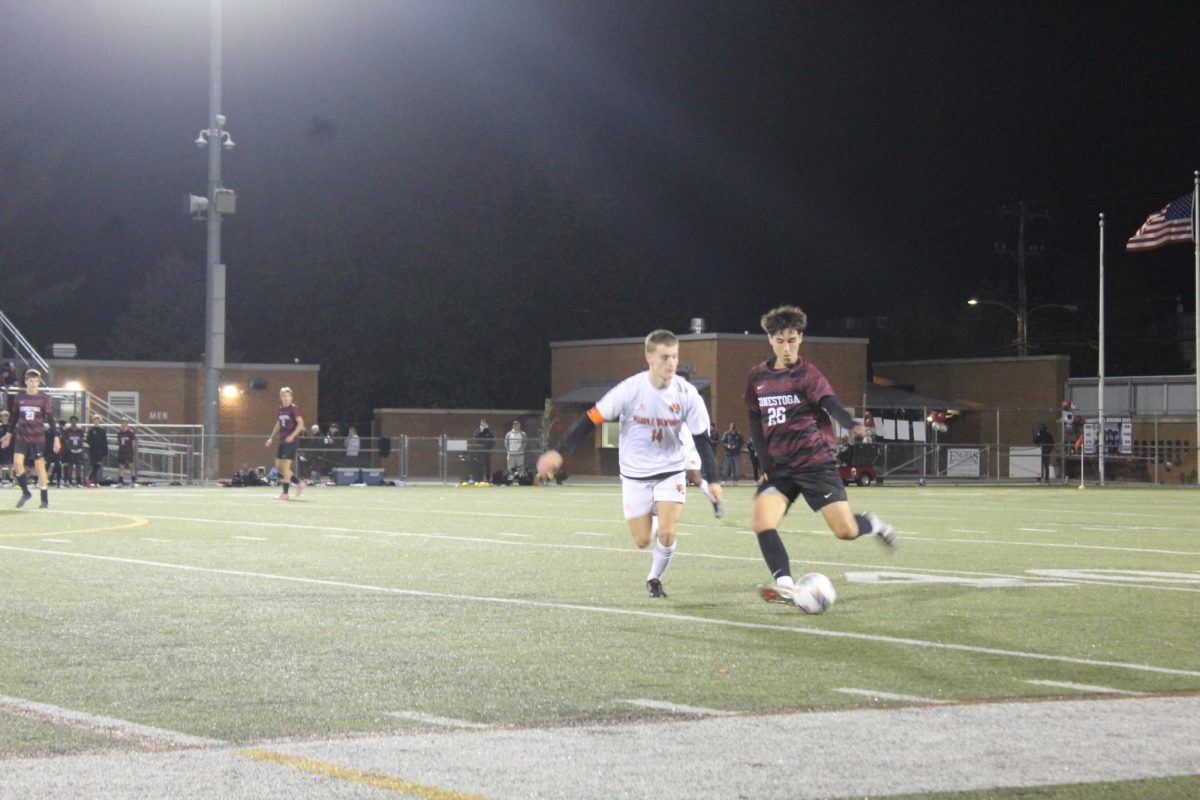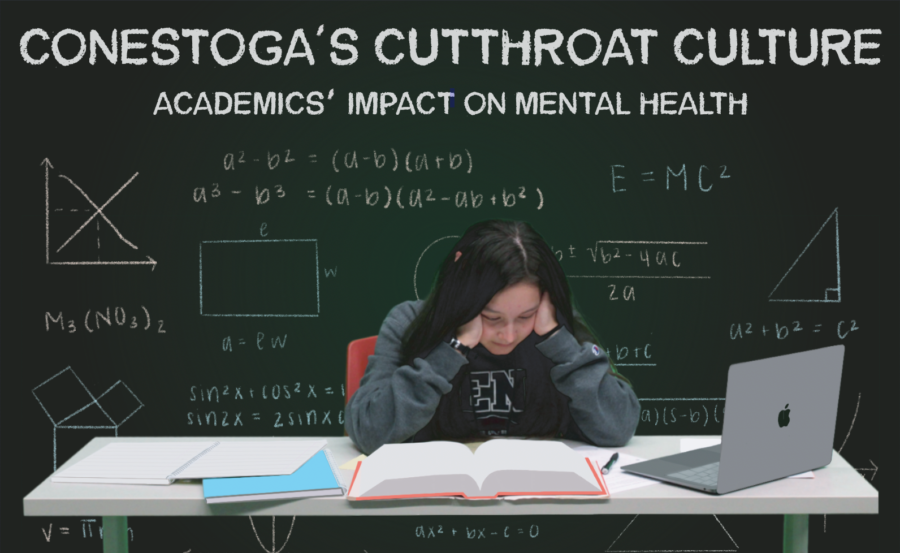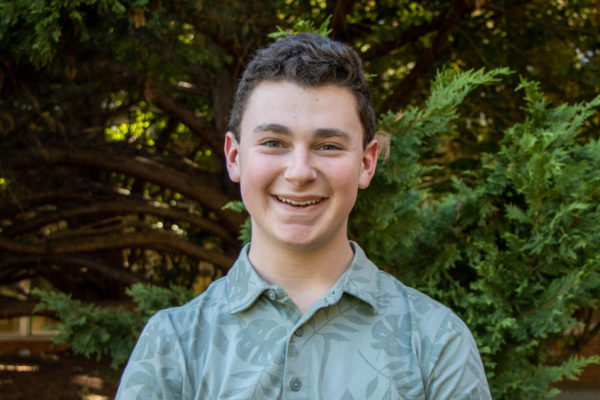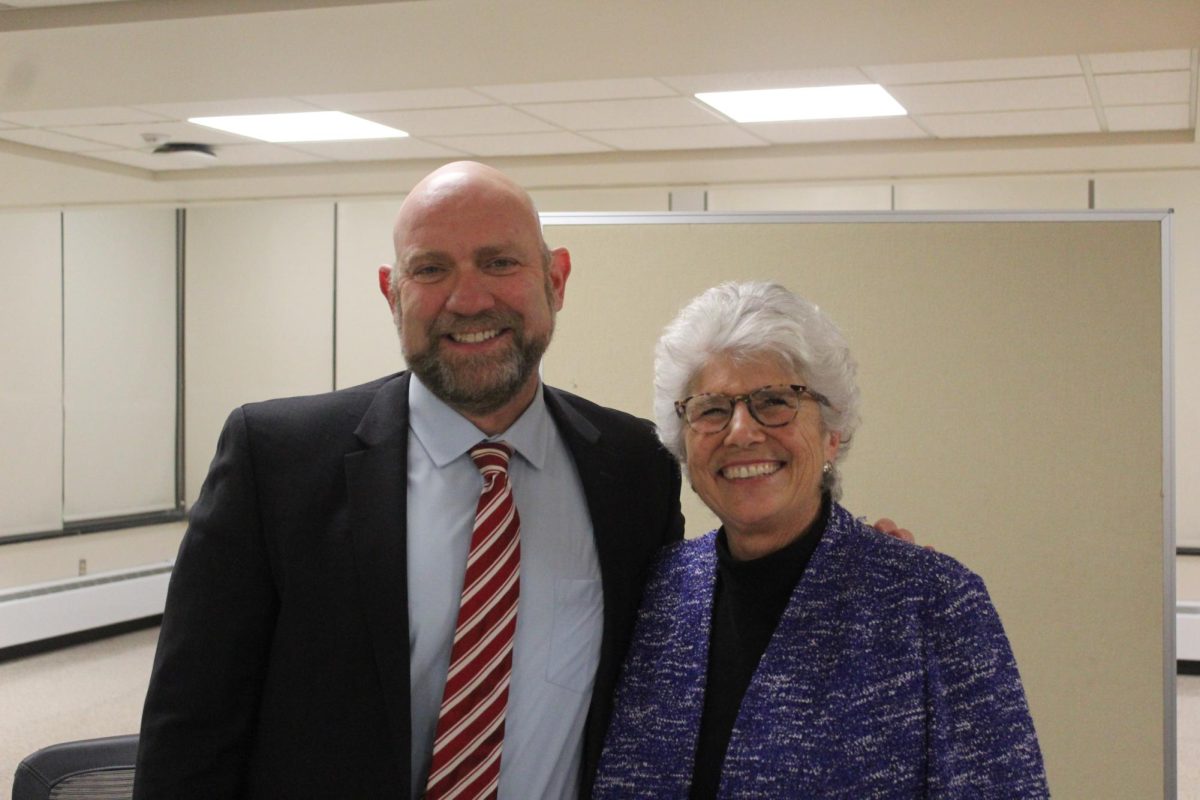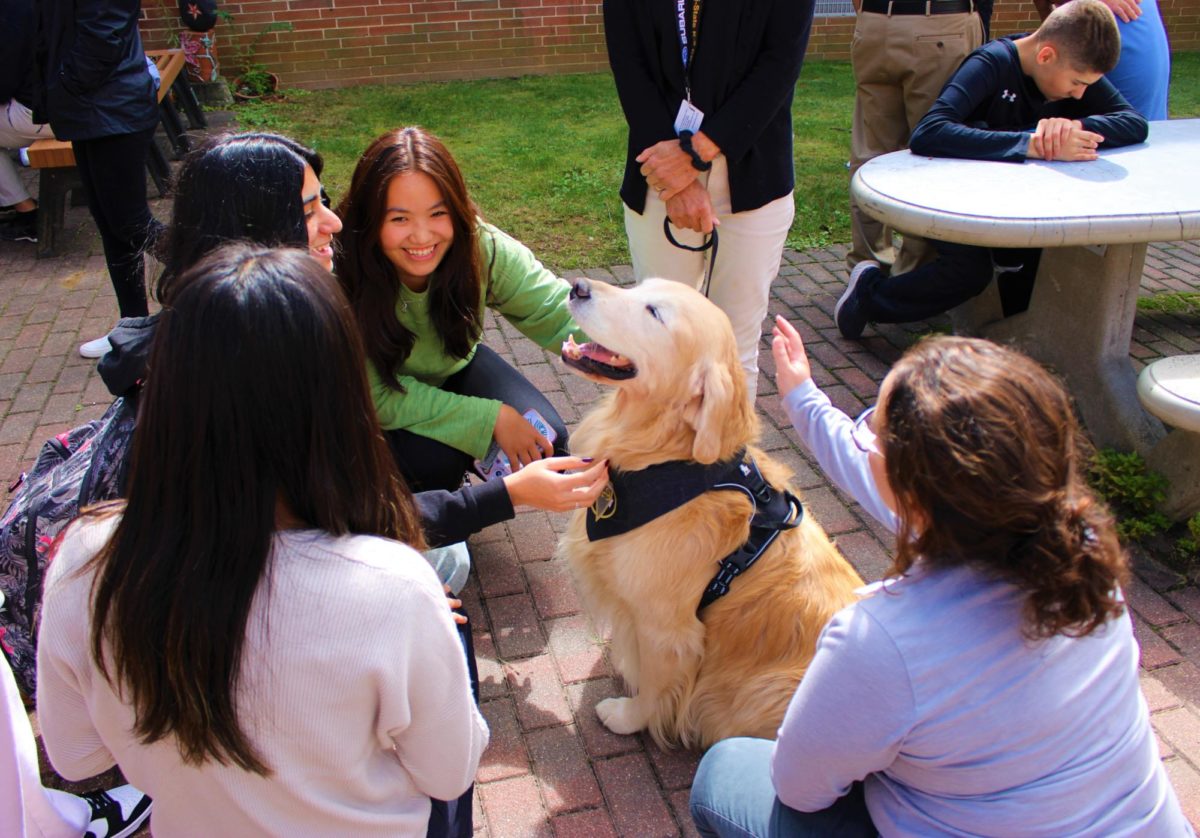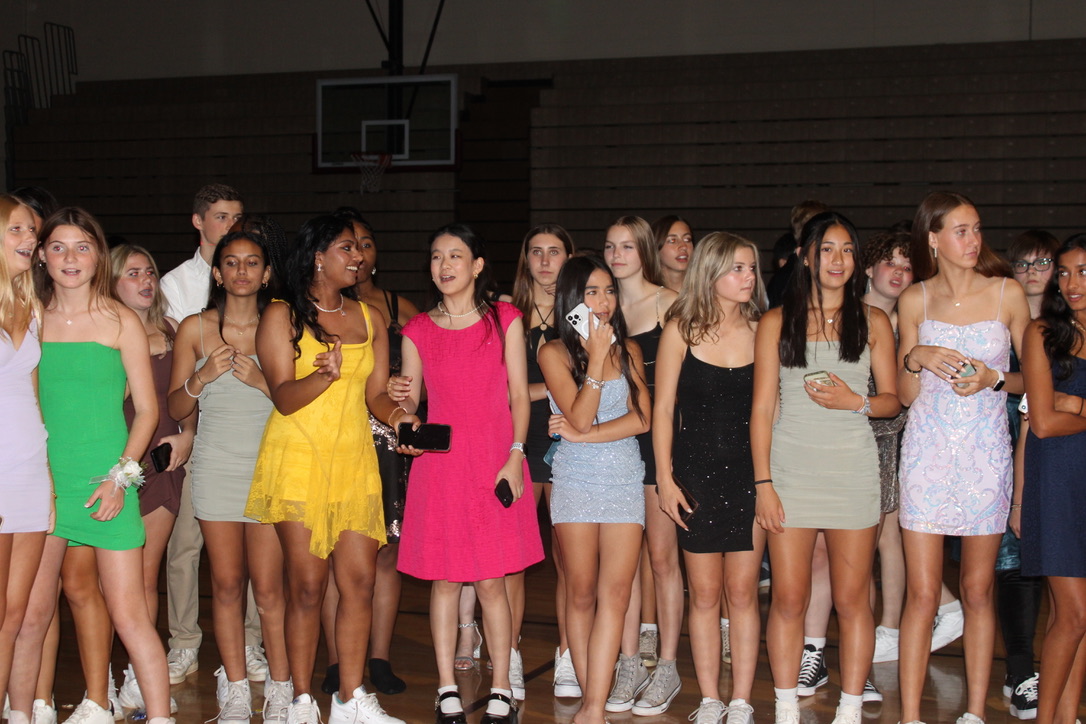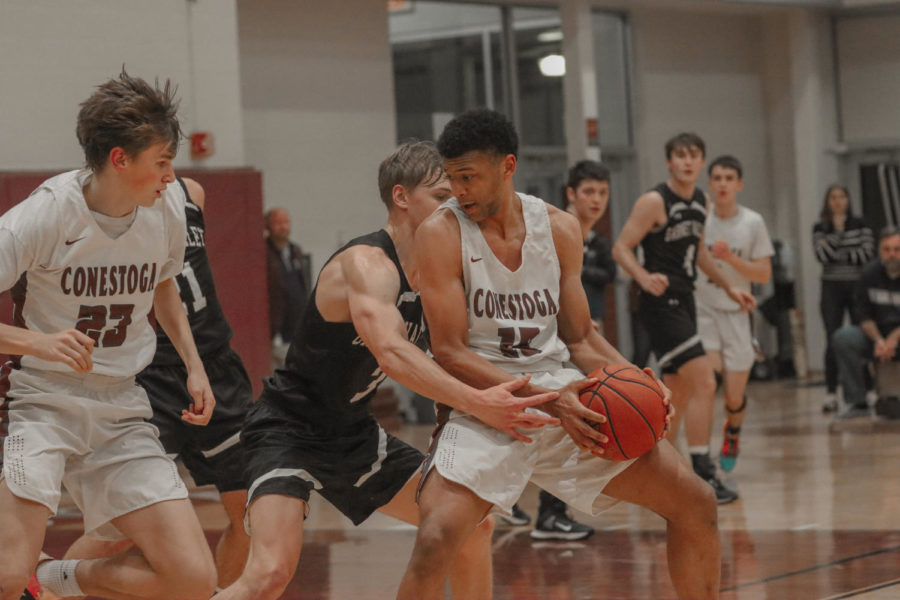By Sophia Pan, Co-Editor-in-Chief, Maddie Pulliam, Staff Reporter and Ben Shapiro, Co-Copy Editor
Video by Zachary Rejoinis, Staff Reporter
Content warning: this article contains discussion of mental health, depression and anxiety. Reader discretion is advised.
Editor’s Note: The Spoke is aware that everyone has their own stressors extending much farther than the school building. This article, however, strictly focuses on academic stressors and their relation to mental health. As a privacy measure, names indicated with an asterisk (*) are aliases.
Teenagers are among the most susceptible group to mental health-related issues yet are among the least likely to receive proper care. According to a World Health Organization (WHO) study in late 2021, one in seven 10 to 19-year-olds globally will experience the effects of a mental disorder during their adolescent years.
Conestoga is no exception.
In the fall of 2020, the American Academy of Pediatrics, the American Academy of Child and Adolescent Psychiatry, and the Children’s Hospital Association joined together in declaring a national state of emergency in children’s mental health. Adolescent mental health has long been an issue, but only recently has national conversation shed light on it.
A 2018 Pew Research Center survey found that 61% of teens ages 13 to 17 considered “pressure to get good grades” to cause “a lot” of stress — the biggest stressor, outpacing the second most prominent by 32 percentage points. According to a survey conducted by The Spoke, 74% of Conestoga students feel that academics negatively impact their mental health (see Fig. 1). When compared to the effects of social media, friendships, family and jobs, a majority of students consistently rank academic pressure as having the most severe impact on their mental health.
“It is very competitive (at Conestoga), and everyone is always fighting to be the best. It’s just a normalized culture at ’Stoga,” freshman Ayan Kumar said. “Everyone is trying to be the smartest, be the best, get the best grades, have the highest GPA and succeed.”
Kumar sees the academic competition at Conestoga as being a problem due to its effect on students’ outlook of school. Stress and anxiety about classes, tests and grades have the biggest impact on his mental health, and it is not a positive one. This trend progresses across the nation, as the stress levels of high school students continue to rise. Despite national understanding and acknowledgment of the youth mental health crisis, many mental health professionals see a lack of action to resolve the issue.
While Conestoga has guidance counselors, mental health specialists and school psychologists, many students do not opt to meet with them. Marissa Marschall, mental health clinician and director at Minding Your Mind, an organization that will hold a virtual training to teachers on Feb. 1, emphasizes that both students and school administrators must make the effort to advocate for their well-being.
“I think students are willing to take the help (when schools make it accessible) and acknowledge that they are struggling, but (schools) have to open the door for students to be able to open up (to them),” Marschall said.
Senior Annie Simpson sees barriers to students taking the first step when it comes to getting help. She recognizes that most mental health guidance relies on students advocating for themselves — an intimidating task, especially one to take on during the school day.
“I feel like kids are scared to (get help at school) because they’ll think, ‘Oh, I don’t want to expose my friend and I don’t want to get myself in trouble,’” Simpson said. “But if you’re trying to help somebody, you should go get that help. I know kids are scared to go to guidance, so (the counselors) can’t help everybody because they don’t know who’s actually in trouble.”
Even when students do reach out for help, however, the conversation can often unintentionally fall back to academic standing rather than resolving the root issues that affect students. When senior Avery Smith* meets with teachers and guidance counselors to discuss how they are doing, they see the conversation often defaulting to grades.
“There is a lot of pressure on performance, and (conversations about mental health) normally go, ‘Let’s look at your grades and see how we can get those up,’” Smith said. “I don’t feel like there’s a whole lot of, ‘Here’s what you can do to help yourself or get help with (mental health).’”
Why academics negatively impact student mental health
For many academically-driven students in the building, comparison and competition over post-graduation plans is rife, acting as a driving force behind their scholastic efforts. Faced with a selection of 28 Advanced Placement (AP) classes — a number far outpacing the national average of eight offered, according to College Transitions — students commonly pack their schedules with many rigorous, college-level classes. According to the Future Ready PA Index, 76% of Conestoga students are enrolled in at least one AP class, more than four times the national average of 17%, a Georgetown estimate of students enrolled in AP classes.
Schedule-packing with post-secondary school in mind, however, is not just a common practice for juniors and seniors preparing for after graduation. Sophomore Sanveer Kashyap has noticed that even freshmen enter the doors with the same intent: maximizing their schedules to take the hardest courses.
“You’re encouraged to take as many AP classes as possible, not just by your teachers but by your friends, too. (It seems like) everybody takes an AP class, and it’s very common to see kids taking two or three APs freshman year,” Kashyap said. “You don’t see that anywhere else; it’s just our school’s culture.”
Seeing a similar trend behind AP class enrollment, senior Lavanya Ahluwahlia notes that, much of the time, taking AP classes does not necessarily correlate with having passion for the subject. Instead, she sees academic peer pressure and a focus on simply taking the highest number of advanced classes as bigger factors in course selection.
“I know that I’ve been affected by the competition to take the most AP classes. And I’m like, ‘Oh, I’m only taking, like, two or three,’ which is pretty good already, but there’s people out here taking six or seven,” Ahluwahlia said. “It’s Conestoga, so it’s competitive. Nobody slows down ever, so it’s always like playing catch up, and that stress can get to you and (force you) to slow down.”
This forward-focused mindset that many academically-driven students possess produces a breeding ground for comparison of students through grades, GPA and academic standing. Along with the many students who see college as a large stressor (see Fig. 2), Kashyap believes that attending Conestoga, which prides itself on sending a large number of students to top colleges each year, comes with a grades-oriented view of learning that underlies this rampant comparison.
“There’s a lot of tying self-worth to grades, especially in such a competitive environment. If somebody who’s way smarter than you gets a 93 on a test but you can pull a 95, that feels like a big deal,” Kashyap said. “Otherwise, it’s like being 5’ 6” in the NBA.”
Simpson has seen the focus on grades and getting into college impact her relationships with many of her friends. As a senior, she wants to go out on the weekends and spend time with her close friends before they all have to leave for college, but especially with her academic-focused friends, time away from school and college applications is rare.
“I’ve seen my friends cancel all their plans over the weekend just to do schoolwork,” Simpson said. “Half of them will focus a lot of time and energy doing schoolwork, dedicate their free periods to schoolwork and have all of these extracurriculars to show on their (college applications instead of) focusing on themselves.”
How academic pressure has impacted some students
The Spoke’s data found that almost half of surveyed students rated their mental health between “Neutral” and “Extremely poor” (see Fig. 3). Smith notes that the constant pressure to do more, take one more AP class and get a better grade on the next test creates an unattainable goal of extreme productivity all the time. They feel that the burden of living in this academic bubble leads to “disaster.”
The stress of schoolwork and the pressure to always do well academically caused Smith to have a panic attack recently. Remembering the experience as overwhelming, they explained that the constant expectations of high achievement placed on students finally got to them.
“A month ago, there was one day I was completely overstimulated: I had to go to the nurse and then go home. Looking back, I’m not ashamed of it, but (in that moment), I had this intense need for no one to look at me because I didn’t want anyone to see that I was stressed out or that I was going through something,” Smith recalled.
While some students, like Smith, feel the pressure as a burst that hits them all at once, others experience a more prolonged sense of dread. Kashyap finds the “nonstop” academic week monotonous and the academic grind he and his peers work at tiring.
“I feel like, every night, I am studying for a test, and then during the day, I wake up, and all I do is go to school; it’s the same thing over and over. It’s just like how people complain (that) they’re stuck in a system of waking up, going to work, going home and waking up again all the time,” Kashyap said.
A possible solution to the problem
On a personal level, there are steps students can take to give themselves room to breathe by reducing stressors. While the school’s social climate may be geared toward taking the hardest classes, students do not have to abide by it; with careful reflection, they can opt to choose courses based on their own best interest. Calculus teacher Paul Poiesz sees how students with a lot going on in their academic and personal spheres can become overwhelmed.
“I think everyone needs to look at their own big picture, realize all of the stressors and all of the pressures that are in their individual lives, and be willing to make sacrifices in some areas in order to make the big picture more palatable,” Poiesz said. “You sit down to a big dinner and look at the dinner table (and think), ‘I want all of it.’ Well, that might not be the smartest thing for you. ‘I want all of it’ is a nice goal in life, but sometimes wanting all of it and then deciding, ‘Maybe all of it right now isn’t a great idea’ is how we have to look at things.”
Agreeing with Poiesz about the value of weighing priorities, junior Asha Ganesan has found that detaching from school when needed has made her more productive. And when it comes down to it, focusing on mental health only creates a stronger foundation for academic success.
“Letting go a tiny bit has actually really, really helped in prioritizing my health over my grades,” Ganesan said, “because the thing is, if your health isn’t good, you can’t keep maintaining such academic integrity. If your health is declining, you can’t (expect good grades). Your health has to come first.”
Sometimes, though, efforts on the part of the student may not be enough to improve their mental health. At the administrative level, the high school can also play a major role by having open communication with the student body about mental health and, specifically, academic stress.
In December 2021, the U.S. Surgeon General released a Youth Mental Health Advisory in hopes of improving the current mental health status quo. The advisory noted that not only do educators and school administrators need to be open to students looking to receive help, but in order to see change, they must actively offer services for students to get that help. Ganesan strongly agrees with the Surgeon General and believes it to be vital for schools to have mental health resources in schools. While Conestoga does provide these resources, she feels that a lack of transparency surrounding them makes students less likely to reach out for help.
“To a degree, the problem with the school system and how they approach mental health is that when people report you (to mental health professionals), nobody knows what’s going to happen after you get reported,” Ganesan said. “And it’s a problem because a lot of people are scared to use the treatment centers. I think the school should do a better job of informing people of what is going to happen.”
Open communication between educators, administrators and students is a huge factor in improving student mental health. Given a set of factors and asked which, if any, would benefit their mental health, a vast majority of the respondents to The Spoke’s survey chose a break from the constant, fast-paced culture. 73% of students feel that re-implementing Work Well Wednesdays, the shortened catch-up days instituted every Wednesday last school year, would benefit their mental health. Additionally, 65% of students believe that extending Thanksgiving, winter and spring breaks would improve their mental health (see Fig. 4).
Since the beginning of the academic year, school administration has been implementing practices aimed at improving students’ mental health, such as eliminating midterms and finals and discontinuing the practice of reporting absences on final transcripts. Despite these measures, there has yet to be a conversation in which students openly voice their concerns and potential solutions.
Seeing the pressure students are under academically, the district is planning for a stress committee to convene in the coming years. The committee’s composition of members is still in the works, but it aims to take an open-minded approach to reducing student stress by examining factors like the structure of the school day.
Simpson believes that communication between students and those who are willing to help them, such as via a committee, is vital in supporting mental health. She notes that there are gaps in administrators’ knowledge of students’ mental health that the students themselves can fill.
“I think (the administration) is trying to do their best, but they don’t know everything,” Simpson said.
By opening channels of communication, administrators can better tailor their solutions to the wants and needs of students. For example, providing a public forum or town hall-style space for students to directly voice their concerns would allow administrators to base solutions off student feedback. The students have opinions on their mental health — both positive and negative — but the administration must actively seek out those opinions and provide the time and space for students to express them. Taking routes that grant more anonymity, such as open-ended surveys, would incorporate students who might not feel comfortable tying their names to their mental health struggles. School psychologist Dr. Cynthia Knapp has seen firsthand the value of students advocating for themselves and being listened to by the professionals trying to help them.
“I just had a meeting yesterday with a student (where she spoke with our) whole team of staff, and she was heard,” Knapp said. “I think our students’ input is very valuable.”
Sophia Pan can be reached at [email protected].
Maddie Pulliam can be reached at [email protected].
Ben Shapiro can be reached at [email protected].
Zachary Rejoinis can be reached at [email protected].

















































